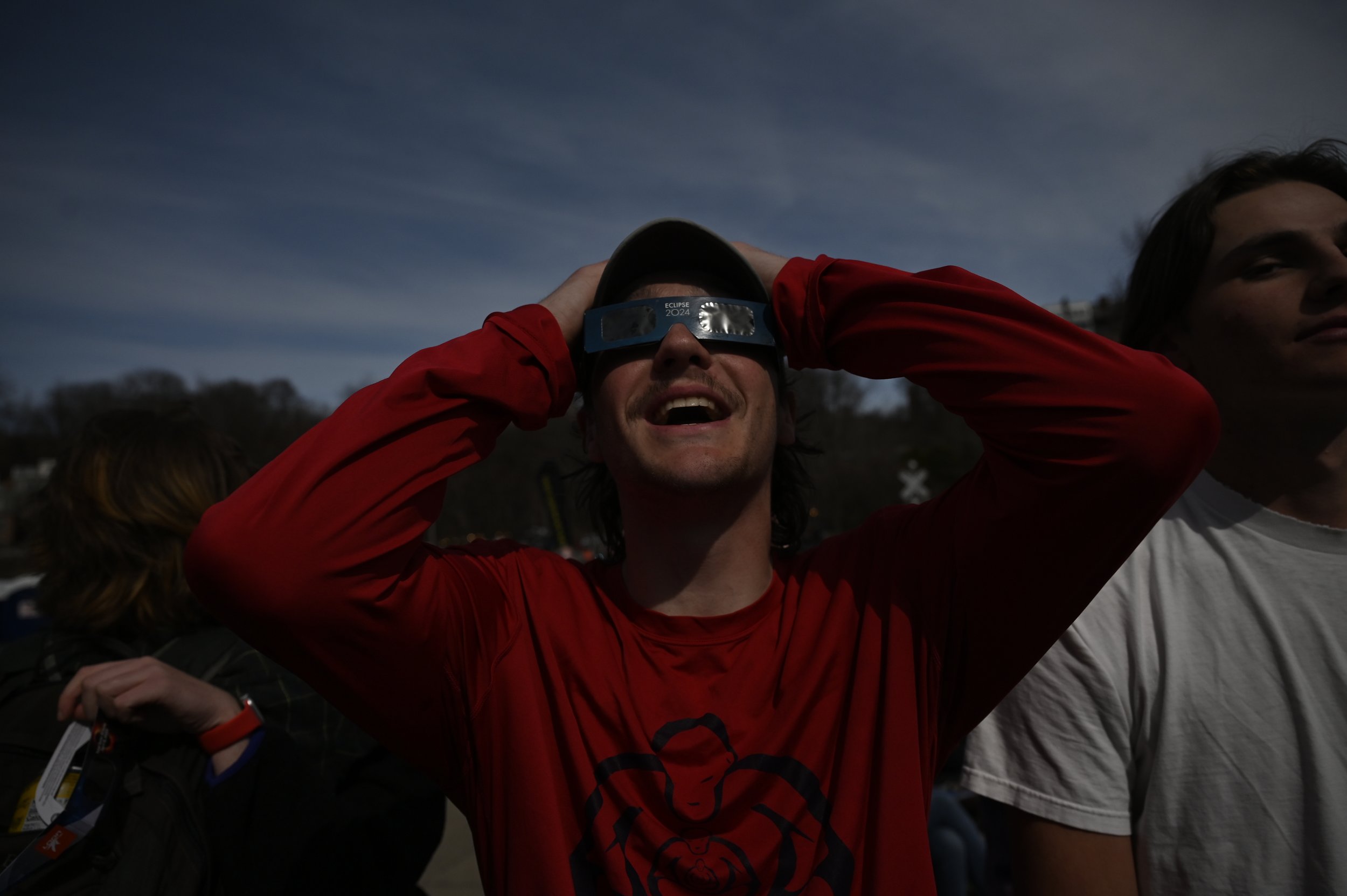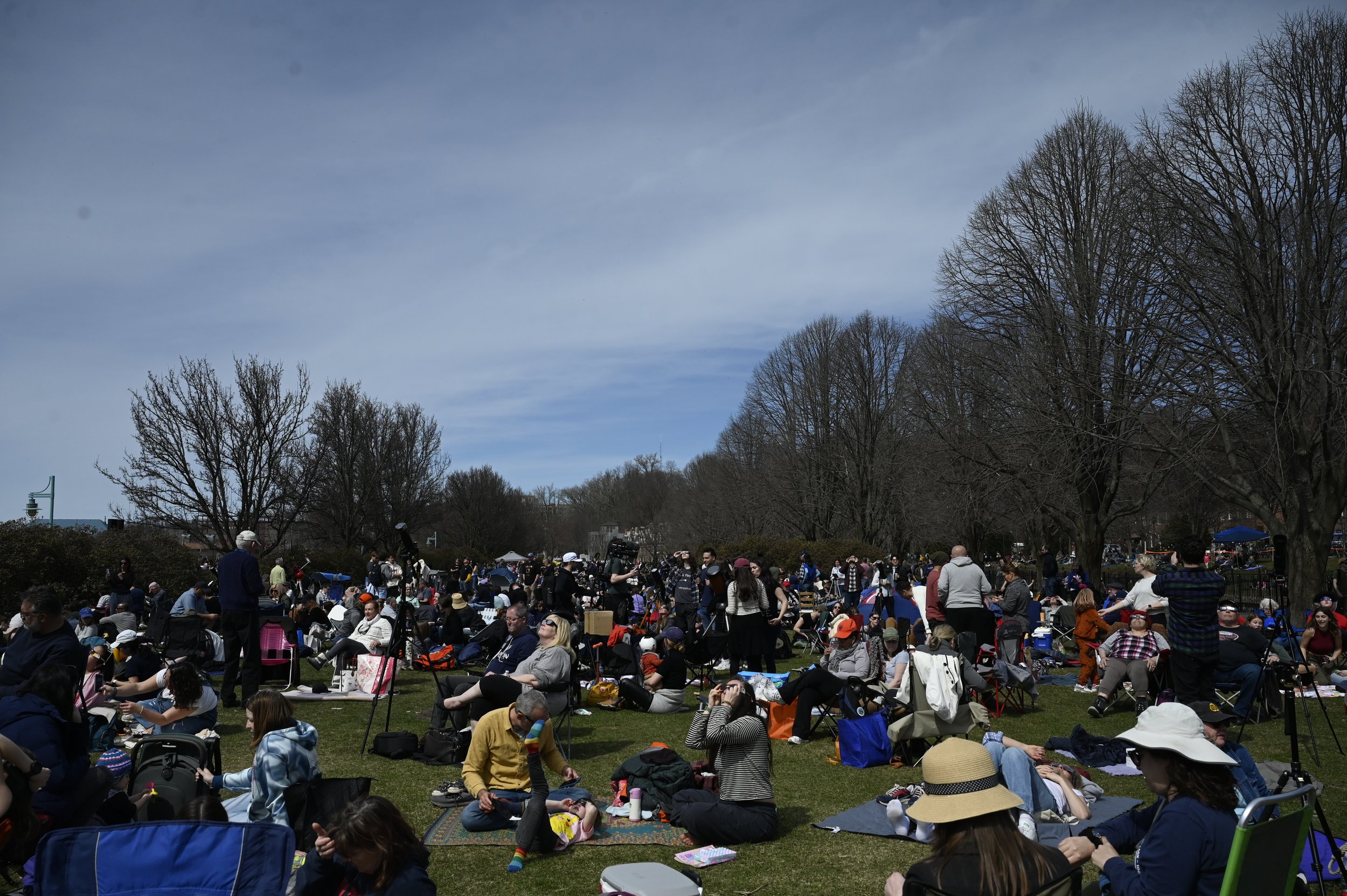
Traffic jam in the path of totality
Burlington, Vermont.
April 8th.
Burlington, Vermont. April 8.
At 3:26 p.m., the sky reflecting off the water grew dark, and the air cold. For three minutes, tens of thousands gathered on the shore of Lake Champlain and held their breath in awe of the total eclipse taking place.
Burlington City Arts had been advertising a series of eclipse-themed events for months—as it was one of the few significant municipalities that fell within the path of totality. Situated in the center of this 70- to 80-mile-wide path, surrounded by clear skies and rolling green hills, it was also an optimal viewing spot. Many southern New Englanders chose to pack their cars and join the parade of Massachusetts, Connecticut, and New Hampshire plates heading north as the appointed hour approached.
According to the Vermont Agency of Administration, an estimated 160,000 visitors came to see the show—and the shit show that soon followed.
Once the sun returned to the sky for the second time that day, everyone who drove north started driving south. I-89 was backed up all the way to New Hampshire.
What would normally take 45 minutes to cover the 36 miles between Stowe and Burlington, took almost three hours.
The state’s signs stationed along the side of the road flashing bright orange, “Arrive Early, Stay Late!” didn’t do much to speed up the crawling traffic. Soon, the message was switched to read “Delays Expected”.
In a city designed to accommodate its 45,000 residents, Zach Williamson, festival and event director for Burlington City Arts, was tasked with making room for the incoming influx of cars.
Expecting roughly 50,000 to visit just Burlington alone, this is the largest event the city has ever hosted with more than twice the number of residents showing up for a day.
“It’s gonna be a challenge for sure,” he said. “But If we can stay around 50,000 we think we can manage that. The models show that if we get more than 50,000, that’s when we start to see real traffic—gridlock.”
Williamson could be seen on event day riding in style—navigating the crowd in a small municipal vehicle fitted with a yellow flashing light. Armed with a list of places to be and times to meet, he slipped in between through an artfully constructed network of closed roads.
Along with the roads, closures were also seen at city offices and schools across the county. A makeshift parking lot took up the northbound side of Route 127, and buses were organized to carry people to and from their cars. It took more than a few traffic cones to pull the event off. Williamson had a whole team on hand and was in communication with local police officials to start preparations early.
“I’ve put together plans, we’ve shared plans, we’ve worked as a group—a lot of thought has gone into it,” he said.
Williamson had been in touch with Jon Murad, Burlington’s chief of police, for over half a year to begin the planning process.
Come event day, Murad could be found down by the waterside, interacting with the crowd to ensure safety and fun.
“Fortunately we did see a wonderful crowd,” he said. “The right size for us here in Burlington. A crowd size that we can handle.”
Murad described the role of police at the event. “For police and fire—for us” he gestured to his vest. “We end up thinking about things like crowd control, how to make sure we are funneling people in safe ways.”
Besides the traffic concerns, “I think everyone’s had a great day” Murad said as he gestured to the giddy crowd passing by. “I don’t see many disappointed faces right now.”
He wore his matching smile with pride. “I’m really proud of how the team worked,” he said. We had almost every officer that we’ve got on either traffic posts or security posts here on the waterfront.”
He was hopeful that people would spend the night in the city to ease the flow of traffic from a stream to a trickle. However, that was not the case, as most rushed back to their cars and hopped on the highway in an attempt to make it home for work the next day.
Read the full article on Horizon Mass News




















